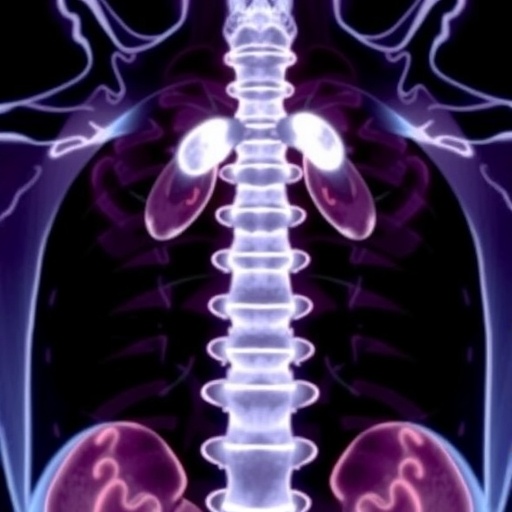A groundbreaking study recently published in the prestigious journal Neurology sheds light on a critical and previously underappreciated drug interaction that specifically affects older adults residing in nursing homes. Researchers have identified that the co-administration of tramadol, a widely prescribed opioid analgesic, with certain antidepressants that inhibit the cytochrome P450 2D6 enzyme (CYP2D6) may significantly elevate the risk of seizures in this vulnerable population. This discovery is a vital step toward improving the safety profiles of medication regimens in geriatric care, where polypharmacy and drug-drug interactions pose substantial risks.
Tramadol is a synthetic opioid often prescribed for the management of moderate to severe pain in adults. Its analgesic effect largely depends on metabolic activation by the enzyme CYP2D6, which converts tramadol into its active metabolite, O-desmethyltramadol, a more potent mu-opioid receptor agonist. However, when administered alongside antidepressants that act as CYP2D6 inhibitors—such as fluoxetine, paroxetine, and bupropion—this metabolism is disrupted. This interference leads to elevated plasma concentrations of unmetabolized tramadol, which may precipitate adverse neurological effects, including an increased propensity for seizures.
The team of researchers, led by Dr. Yu-Jung Jenny Wei of The Ohio State University, conducted a retrospective cohort analysis spanning ten years using Medicare data. This extensive dataset encompassed 70,156 nursing home residents aged 65 and above who were prescribed both tramadol and antidepressant medications. The investigators meticulously stratified participants based on the sequence of medication initiation, comparing those who started tramadol first and then added an antidepressant to those who initiated antidepressant therapy prior to tramadol introduction.
Analysis of the seizure incidence revealed compelling differences between these groups. For individuals who commenced tramadol before adding an antidepressant, the seizure rate was documented at 16 per 100 person-years. Conversely, for those who started antidepressants before tramadol, the seizure rate increased to 20 per 100 person-years. Upon further dissection, patients on CYP2D6-inhibiting antidepressants exhibited seizure rates of 18 and 22 per 100 person-years in the respective groups, compared to 16 and 20 per 100 person-years among those on antidepressants that do not inhibit CYP2D6.
Crucially, after adjusting for confounding factors such as baseline pain severity, depressive symptomatology, physical function, and cognitive status, the study quantified an approximate 9% higher risk of seizures in the tramadol-first group using CYP2D6-inhibiting antidepressants, and about a 6% greater risk in the antidepressant-first group under similar pharmacological conditions. These adjustments help isolate the influence of drug-drug interactions from other health variables common in elderly populations, underscoring the robustness of the findings.
To validate that this effect was specific to tramadol’s unique metabolic pathway, the researchers performed a comparative analysis using hydrocodone, another opioid analgesic that undergoes different metabolic processing and does not rely heavily on CYP2D6. Remarkably, no increased seizure risk was observed when hydrocodone was combined with CYP2D6-inhibiting antidepressants, reinforcing the hypothesis that the interaction is pharmacokinetically mediated and specific to tramadol.
The clinical implications of these findings are profound. Older adults frequently confront multiple chronic conditions necessitating polypharmacy, a major contributor to adverse drug events. Antidepressants that inhibit CYP2D6 are commonly prescribed for depression and other neuropsychiatric conditions prevalent in geriatric populations. Simultaneously, tramadol remains a preferred analgesic for pain management due to its perceived lower risk of respiratory depression compared to other opioids. Therefore, the co-prescription of these agents is not unusual in nursing home settings, making awareness of this interaction essential for prescribers.
Dr. Wei highlights the necessity for heightened vigilance in clinical practice, emphasizing that “doctors should be aware of potential seizure risks when prescribing tramadol with CYP2D6-inhibiting antidepressants.” The subtle yet measurable increase in seizure risk revealed by this large-scale epidemiological study may necessitate reconsideration of prescribing patterns, dosage adjustment, or increased monitoring to mitigate adverse outcomes.
Despite these significant insights, the study acknowledges certain limitations inherent to its design. Utilization of prescription records cannot confirm patient adherence, and seizure diagnoses were ascertained from clinical claims data without neurophysiological correlation, which may introduce misclassification bias. Additionally, the observational nature of the analysis precludes definitive causal inferences, warranting further prospective studies to corroborate these epidemiological associations with mechanistic data.
Nevertheless, the research articulates a clear pharmacological rationale for the observed phenomena and provides actionable data to inform safer therapeutic strategies. The findings advocate for personalized medicine approaches in the elderly, considering genetic variability, enzyme inhibition potential, and the cumulative burden of comorbidities and medications.
Moreover, the study invites broader scientific discourse on the necessity of evaluating potential enzyme-mediated drug interactions routinely, especially with polypharmacy becoming increasingly prevalent in the aging global population. Understanding how metabolic enzymes like CYP2D6 influence drug efficacy and safety can revolutionize clinical decision-making and optimize patient outcomes.
This investigation, supported by the National Institute on Aging, epitomizes the convergence of pharmacology, geriatrics, and neurology, aiming to ensure that medical therapies designed to alleviate suffering do not inadvertently cause harm. It serves as a clarion call for healthcare practitioners to employ meticulous medication management, prioritizing the delicate balance in treating chronic pain and psychiatric conditions among older adults.
As the medical community digests these findings, further research is anticipated to explore alternative pain management options, identify genetic markers predictive of CYP2D6 activity, and develop clinical guidelines that enhance prescribing safety. Such advancements will be instrumental in protecting the neurological well-being of seniors and minimizing preventable adverse drug reactions.
In conclusion, the evidence firmly indicates that the concurrent use of tramadol and CYP2D6-inhibiting antidepressants in older adults is associated with a modest but significant increase in seizure risk. This nuanced understanding amplifies the importance of integrating pharmacogenetic principles and vigilant clinical assessment into standard practice, particularly in the complex pharmacotherapeutic landscape confronting nursing home residents.
Subject of Research: Drug interactions between tramadol and CYP2D6-inhibiting antidepressants and seizure risk in older adults.
Article Title: Elevated Seizure Risk Associated with Concurrent Use of Tramadol and CYP2D6-Inhibiting Antidepressants in Nursing Home Residents.
News Publication Date: October 8, 2025.
Web References:
Neurology Journal
American Academy of Neurology
Brain & Life Magazine
References: National Institute on Aging supported study; data analyzed from Medicare database over a decade.
Keywords: seizures, antidepressants, tramadol, CYP2D6 inhibitors, drug interactions, older adults, opioid metabolism, nursing home residents, pharmacokinetics, polypharmacy, neurology, seizure risk
Tags: antidepressants and seizure riskCYP2D6 enzyme inhibitorsfluoxetine and tramadol interactionsgeriatric polypharmacy concernsmedication safety in elderly patientsneurological side effects of tramadolopioid analgesics in nursing homesopioid metabolism and drug interactionspain management in geriatric careretrospective cohort study on drug interactionsseizure risk in older adultstramadol and antidepressant interaction





